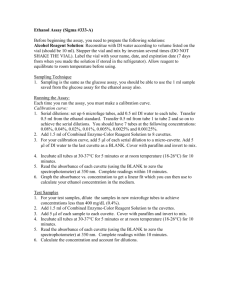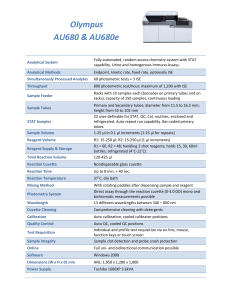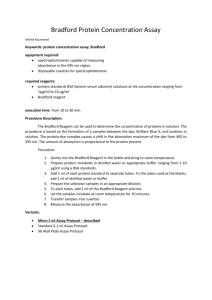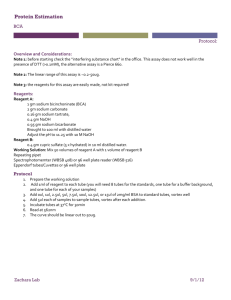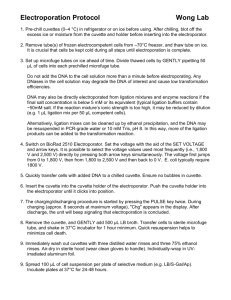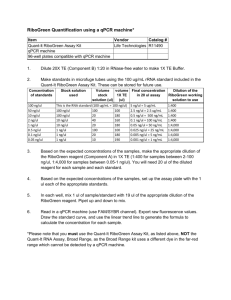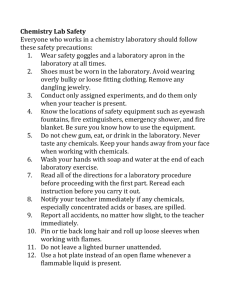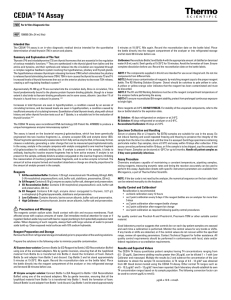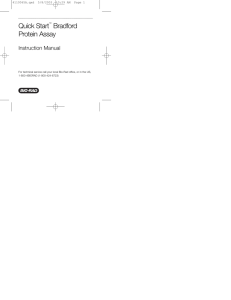Glucose Assay (Sigma #510-A)
advertisement
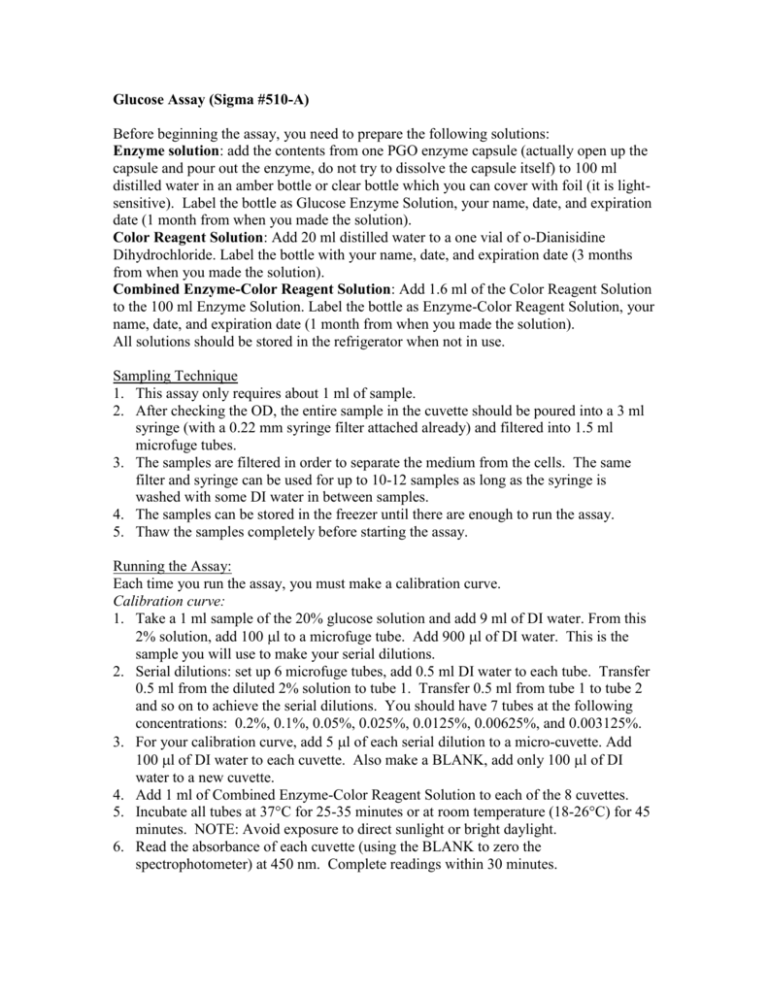
Glucose Assay (Sigma #510-A) Before beginning the assay, you need to prepare the following solutions: Enzyme solution: add the contents from one PGO enzyme capsule (actually open up the capsule and pour out the enzyme, do not try to dissolve the capsule itself) to 100 ml distilled water in an amber bottle or clear bottle which you can cover with foil (it is lightsensitive). Label the bottle as Glucose Enzyme Solution, your name, date, and expiration date (1 month from when you made the solution). Color Reagent Solution: Add 20 ml distilled water to a one vial of o-Dianisidine Dihydrochloride. Label the bottle with your name, date, and expiration date (3 months from when you made the solution). Combined Enzyme-Color Reagent Solution: Add 1.6 ml of the Color Reagent Solution to the 100 ml Enzyme Solution. Label the bottle as Enzyme-Color Reagent Solution, your name, date, and expiration date (1 month from when you made the solution). All solutions should be stored in the refrigerator when not in use. Sampling Technique 1. This assay only requires about 1 ml of sample. 2. After checking the OD, the entire sample in the cuvette should be poured into a 3 ml syringe (with a 0.22 mm syringe filter attached already) and filtered into 1.5 ml microfuge tubes. 3. The samples are filtered in order to separate the medium from the cells. The same filter and syringe can be used for up to 10-12 samples as long as the syringe is washed with some DI water in between samples. 4. The samples can be stored in the freezer until there are enough to run the assay. 5. Thaw the samples completely before starting the assay. Running the Assay: Each time you run the assay, you must make a calibration curve. Calibration curve: 1. Take a 1 ml sample of the 20% glucose solution and add 9 ml of DI water. From this 2% solution, add 100 l to a microfuge tube. Add 900 l of DI water. This is the sample you will use to make your serial dilutions. 2. Serial dilutions: set up 6 microfuge tubes, add 0.5 ml DI water to each tube. Transfer 0.5 ml from the diluted 2% solution to tube 1. Transfer 0.5 ml from tube 1 to tube 2 and so on to achieve the serial dilutions. You should have 7 tubes at the following concentrations: 0.2%, 0.1%, 0.05%, 0.025%, 0.0125%, 0.00625%, and 0.003125%. 3. For your calibration curve, add 5 l of each serial dilution to a micro-cuvette. Add 100 l of DI water to each cuvette. Also make a BLANK, add only 100 l of DI water to a new cuvette. 4. Add 1 ml of Combined Enzyme-Color Reagent Solution to each of the 8 cuvettes. 5. Incubate all tubes at 37°C for 25-35 minutes or at room temperature (18-26°C) for 45 minutes. NOTE: Avoid exposure to direct sunlight or bright daylight. 6. Read the absorbance of each cuvette (using the BLANK to zero the spectrophotometer) at 450 nm. Complete readings within 30 minutes. 7. Graph the absorbance vs. concentration to get a linear fit which you can then use to calculate your glucose concentration in the medium. Test Samples 1. For your test samples, add 100 l to a microfuge tube and add 900 l of DI water. 2. Transfer 5 l of the diluted sample to a micro-cuvette. Add 100 l of DI water to each cuvette. 3. Add 1 ml of Combined Enzyme-Color Reagent Solution to each of the 8 cuvettes. 4. Incubate all tubes at 37°C for 25-35 minutes or at room temperature (18-26°C) for 45 minutes. NOTE: Avoid exposure to direct sunlight or bright daylight. 5. Read the abosorbance of each cuvette (using the BLANK to zero the spectrophotometer) at 450 nm. Complete readings within 30 minutes. If the absorbance is over 0.9, you will need to repeat the reaction with a more diluted sample.
